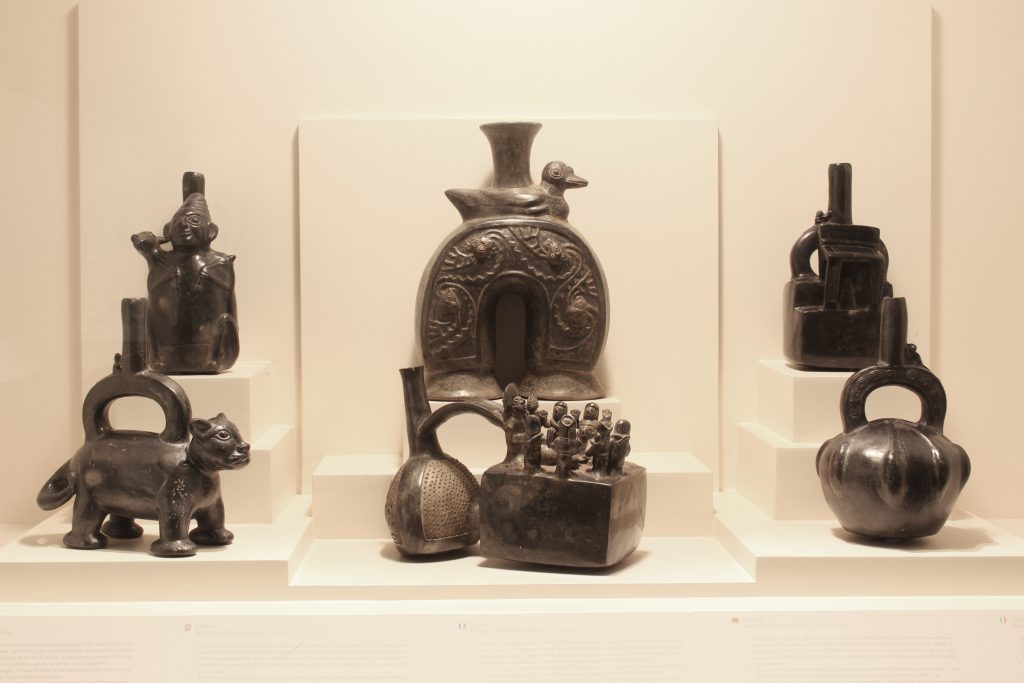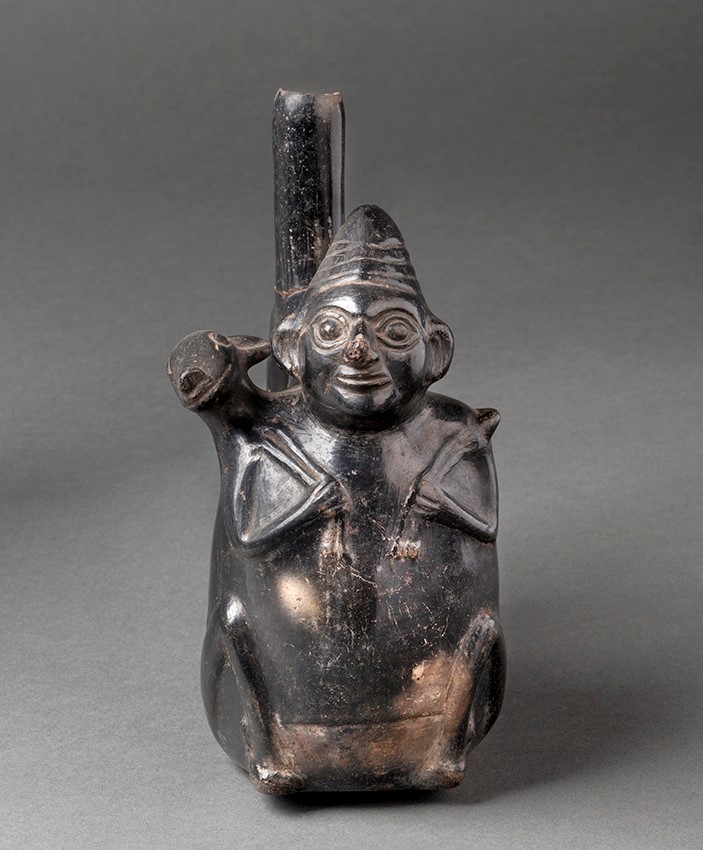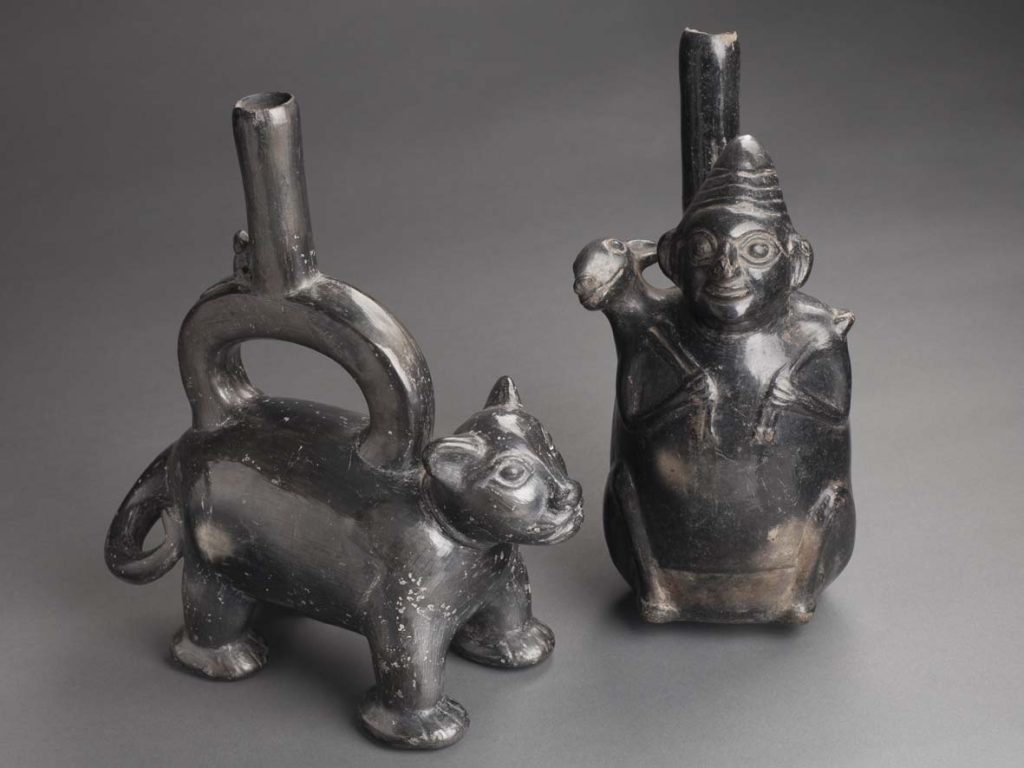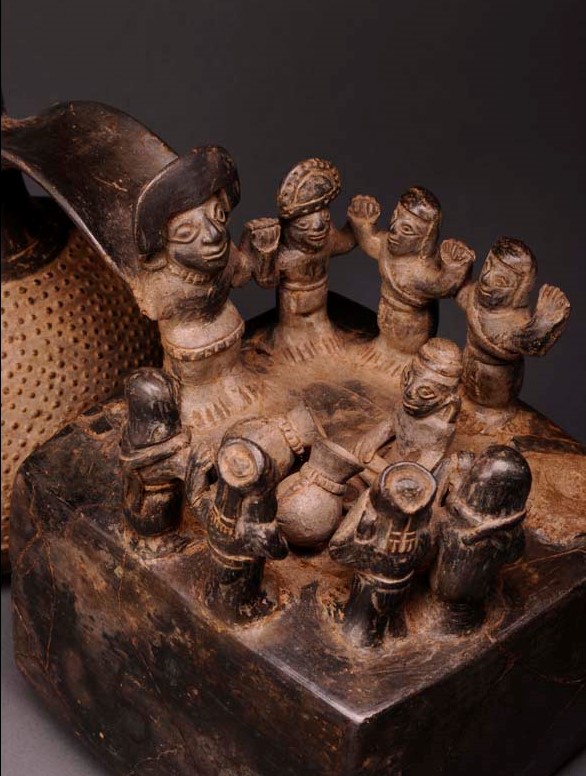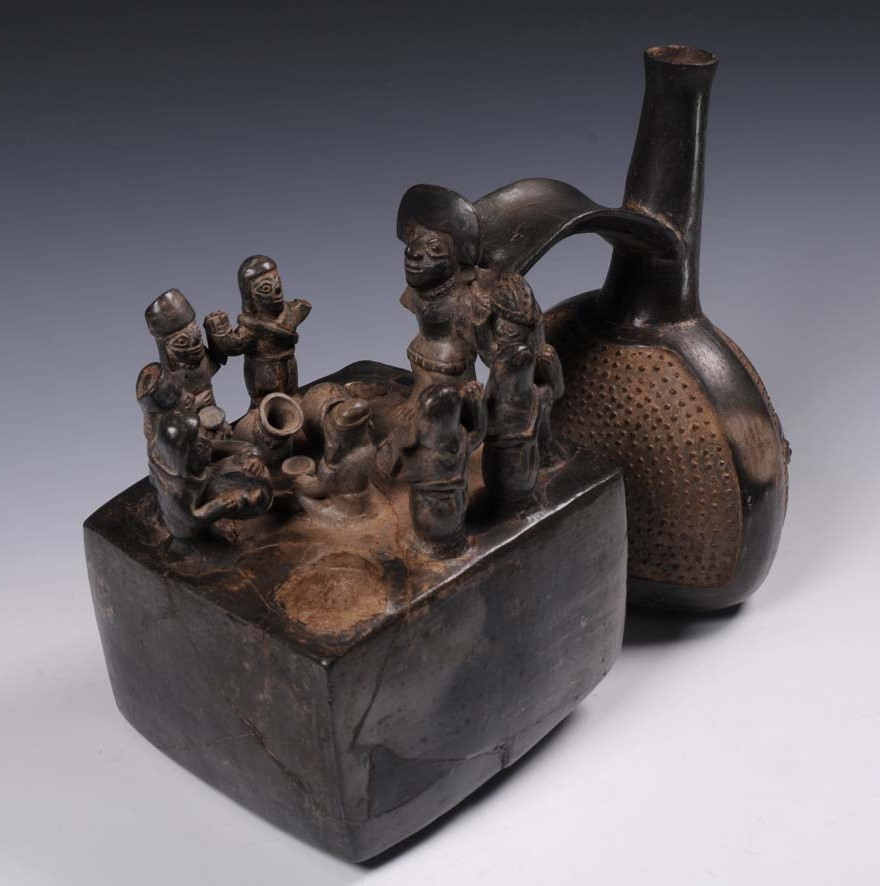Chimú
Room 3, Vitrine 24
Ceramic
Peruvian Northern Coast
Imperial Epoch (1300 AD – 1532 AD)
ML010867, ML017535, ML031843, ML031846, ML031849, ML031850.
In Chimú ceramics we can detect a revival of the northern tradition after a 300 hundred year period of southern artistic influence. Stirrup-spout vessels once again became the dominant form. In the area between the spout and the handle of these pieces there is a small representation of a monkey. In common with the traditions of Mochica art, sculptural ceramics once again assumed a major role.
The Chimú elite chose black ceramics over markedly southern forms such as polychrome designs and the use of the double spout bridge-handled vessel.
Chimú ceramics were made using molds and pieces were mass-produced.
While two thousand years earlier the feline had been represented as a powerful figure vanquishing the deer, in Chimú art a human was represented carrying a deer on his shoulders, thereby transmitting a message related to the humanizing of power.
